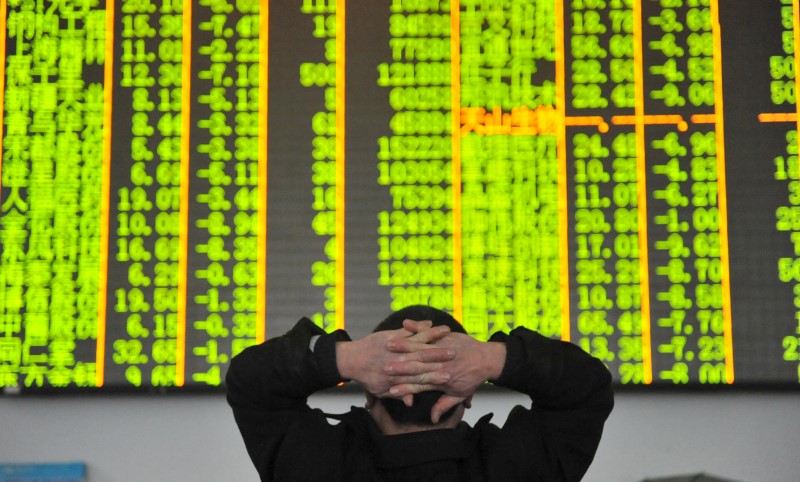
By Koh Gui Qing and Carolyn Cohn
NEW YORK/LONDON (Reuters) – U.S. and European shares whipsawed between modest gains and losses on Wednesday as investors tried to brush aside market risks to focus on the positive, but caution prevailed in the gold market with prices jumping more than 1%.
Reports that some European countries have started to close schools and cancel surgeries due to a resurgence in the COVID-19 pandemic weighed on sentiment, though European shares still managed to trim earlier losses.
In the United States, investors looked to positive earnings reports by investment bank Goldman Sachs Group and UnitedHealth Group Inc, the largest U.S. health insurer, and tried to shelve concerns over two stalled trials for COVID-19 treatment and vaccine that rattled markets on Tuesday.
Investors are hoping that a quick development of a treatment or vaccine for COVID-19 would end the pandemic and aid a recovery in the world economy.
“Bulls are looking to get back on track this morning,” Paul Hickey, a co-founder of Bespoke Investment Group LLC, wrote in a note, but added that an upbeat mood may not hold.
Major U.S. stock indices had given up early gains by 1426 GMT. The S&P 500 was largely flat at 3,512.90, and the Dow Jones Industrial Average was also little changed at 28,655.36. The Nasdaq Composite fell 30 points, or 0.3%, to 11,832.32.
The pan-European STOXX 600 narrowed losses and was down 0.1%, while markets in Frankfurt and Paris were up 0.1% and flat respectively. London, buffeted in part by Brexit angst, dropped 0.6%. World stocks were little changed but still within sight of an all-time high struck on Sept. 3.
Moving beyond bar and pub closures, the Czech Republic shifted schools to distance learning and hospitals started cutting non-urgent medical procedures to free beds.
Moscow authorities said on Wednesday they would introduce online learning for many students starting on Monday, while Northern Ireland announced schools would close for two weeks.
Asian stocks also had a lackluster showing. MSCI’s broadest index of Asia-Pacific shares outside of Japan had tracked Wall Street’s losses overnight to end a seven-day rally.
The index was last down 0.11%, having toppled from a two-and-a-half-year high of 588.76 touched on Tuesday. Chinese shares closed down 0.7%.
Bolstered by uncertainty around the pandemic, the price of gold, a safe-haven asset, climbed by more than 1% to a high of $1,912.51 an ounce.
Government bonds also benefited from investor caution. German bund yields, which move inversely to prices, hit their lowest since May, while the 10-year U.S. Treasury yield dipped to 0.7173%.
The U.S. dollar softened after pulling its best day in three weeks on Tuesday. Its index against a basket of six major currencies fell 0.3% to 93.25. That helped the euro to firm slightly to $1.1768.
Concerns that fuel demand will continue to falter as rising coronavirus cases across Europe and in the United States, the world’s biggest oil consumer, dragged on oil prices. Brent and U.S. crude pared earlier gains and were at $43.19 and $40.99 a barrel, respectively.
(Reporting by Koh Gui Qing; Editing by Lisa Shumaker)











